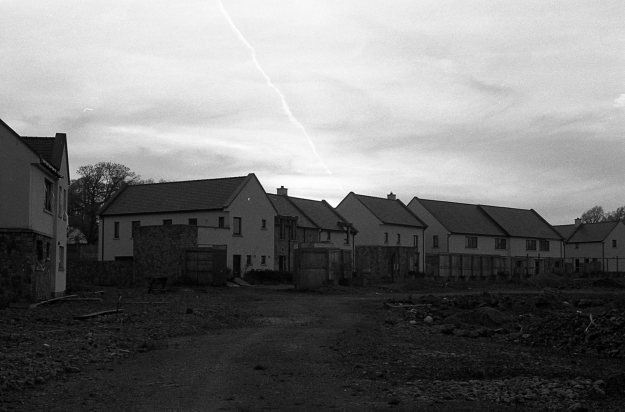It is exactly two years ago since I graduated with a PhD in Art and Design from Manchester School of Art, completing my doctoral research practice film A Place Where Ghosts Dwell, a film I would loosely describe as an essay film. Where Ghosts Dwell explores the relationship between my hometown Longford as a marginalised place, and post-property collapse unfinished housing estates and vacant commercial property as troubling spaces. I refer to them as ‘ghost developments’, and their prevalence in Longford is what drew me back to my hometown to conduct fieldwork research and film production in the historically significant year of 2015 (the year of the same-sex marriage equality referendum). Whilst there, I finally came to terms with my personal history, reconciled and fully embraced my sexual identity, and learnt to rediscover my birthplace – a place that had deeply damaged me in the past. Indeed, while some people in Longford have read the film as a negative portrayal of the place, I feel it is anything but. A read through my PhD thesis will confirm my nuanced but ultimately positive appraisal of Longford, a town which is fascinating for very many reasons. (see PhD text here: https://goo.gl/kfVJTo )
A Place Where Ghosts Dwell from Paddy Baxter on Vimeo.

